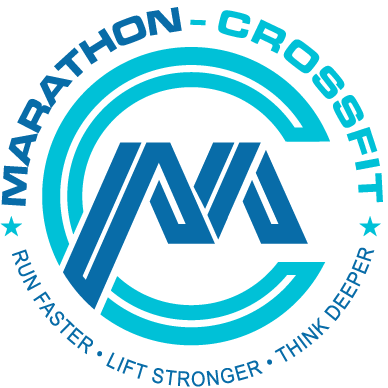Rogue LB-1 Log bar vs Trap bar
This is a comparison of the Rogue LB-1 Log bar and the trap bar including pros, cons, and alternatives. It was published first under which rogue specialty bar to get. Follow the links for more details.

Overview and review of the Rogue Trap bar 1 & 2
This overview of the trap bar 1 & 2 was originally published in my comprehensive guide on which Rogue barbell to buy. If you are currently considering to buy a Rogue barbell it is worth a read to get input on the latest models. I update the guide on a yearly basis depending on Rogue's new releases.
Price 295$/375$
Overview of the Rogue Trap bars
The
trap bar 1 & 2 of
Rogue are their take on the trap
bar.
Trap bars are a great tool for Strongman competitors and powerlifters to get some stress of the posterior chain while still developing deadlift strength. Another application is farmer carries which makes it a very versatile strength tool.
The
trap bar 1 comes in at 58lbs while the
Trap bar 2 comes in at 60lb. The designs are also a good example of how
Rogue handles customer feedback. The first generation of these trap bars was very heavy. This has been remedied in the second generation which you can purchase now. The sleeves come in at 1.91 diameters which means you can use all standard plates from
Rogue with these
speciality bars.
The difference between the
trap bar 1 and
trap bar 2 is that you get a pair of extra handles in the more expensive version. I leave this to personal preference. I always found that these extra handles were in the way and rather a hindrance than a help. However, I am 185cm high. If you have taller athletes you might want to get the
bar which leaves your team/members with more options.
The production process of a
Trap bar involves several welding steps. With
Rogue, you can be sure that the production line knows what they are doing as
Rogue has the volume of purchases and passion which is needed for a good welding job. You can also be sure that someone in America did the weld job. This can not always be said of other
speciality bars in the market. It is unlikely that you will break a
bar, However, if the weld is poor, someone will take away substantial injuries if it breaks mid lift.
Pros of the trap bar
Trap bar deadlifts a great addition to your training routine to get more deadlift volume in. You are putting less stress in your back as you would with the straight barbell. Especially if your gym has a lot of seasoned athletes consider a trap
bar to have more options to address their needs. If you have lots of space in your home gym this is a good purchase to cover some of the more Strongman reölated exercises.
Cons of the trap bar
The trap bar takes a lot of space to store and train with. Most home gyms will not have the necessary space to do farmers walks and store it unless you actually own a farm. Many members in commercial gyms feel intimidated by the sheer size of a trap
bar and it will just sit there and gather dust. Take a hard look at the use case as this is one of these toys which look good when you purchase it and
than won't be used.#
Conclusion
The Rogue trap bars have a good finish and the new iteration has less weight to make it easier to use. Trap bars are a good addition to any powerlifting gym to get more volume in for the deadlift.
Overview and review of the LB-1 Log bar
This is an overview of Rogue LB-1 log bar including pros, cons, and alternatives. It was published first under which rogue specialty bar to get. Follow the links for more details.
Overview of the LB-1 bar
Price:$465
The
LB-1 log bar is the original log bar from Rogue and comes in at a weight of 72lb. This is the mid-range log bar which will cover most needs. The sleeves of this bar are smaller in diameter than a regular barbell, so make sure to get an
axle collar to go with this log to secure your plates. The full specifications of this bar are:
- Weight: 72LB
- 10" diameter laser cut steel tube 1/8" thick
- Fully welded end & internal plates
- Solid 0.375" round bar protection on openings
- Handle Spacing: 26" on center
- 1.66" diameter neutral grip handles
- 14" Loadable Sleeve Length
- Laser-cut Rogue logo!
This is a good tool to get for a man cave as an additional challenge to spice up the barbell routine.
Pros of the LB-1 bar
Pros of the LB-1 log bar are:
- Mid-range price
- Robust craftsmanship
- Neutral grip
This is a great tool to add to your arsenal, if you like strongman training and to lift awkward objects. For presses and rows, it also offers a neutral grip which is easier on the wrists than a straight barbell. Compared to the other log bar models from Rogue the
LB-1 is bang in the middle from a price and size perspective. As with most Rogie products, the craftsmanship is great and this will hold up forever.
Cons of the LB-1 bar
- Too heavy to appeal to everyone in a commercial gym
- Other alternatives for neutral grip training available
- Not strongman competition dimension
With 72lb empty weight the log bar weighs roughly the same as a trap bar, but your leverage to move it is a lot worse. This might make it not the best choice for a commercial gym that wants to add a little fun. The LB-2 might the better option here as it starts at 51lbs and can still be loaded with plates to make it heavier. If a neutral grip is what you are after for rows and presses, you can also consider the different
Multi-grip bars from Rogue as an alternative. These are a lot easier to store on the rack than the log bar. Lastly, most logs in strongman competitions are bigger than the
LB-1. If you are a big guy, get the proper simulation of the real world and go for the
LB-3 instead.
Alternatives to the LB-1 bar
Alternatives to the
LB-1 are:
The
LB-2 and
LB-3 log bar are the big and small brother of the
LB-1. Rogue started with the
LB-1 and quickly realized that log bars of different sizes might be a good idea. The result was the LB-2 and
LB-3. While the
LB-3 is aimed at the biggest of us, the LB-2 is the entry log bar. If you are buying for a commercial gym go with the smaller one to appeal to more people. If you are a monster, go for the
LB-3.
The
multi-grip rogue bars are another option to consider if you are looking for bar with a neutral grip, but also do not want to make it too complex to work in a rack. The log bars can be quite awkward if you do not lift them from the ground with a pad. If the neutral grip is your main concern you might be better off with getting one of the
Rogue-Multi grip bars.
If you are looking into the Rogue log bar to pick up a weight and lift it to the shoulder, then the Rogue strongman bags might be a better option for you. They take up less space, cost less, and get a very similar training result. Of course, they are just a mere simulation of real strongman events, but for mixing up your training they are great.
Conclusion for the LB-1
The
LB-1 log bar is the right log bar for anyone who has a home gym with enough space and is dedicated too mixing up their training. It is not too small or too big, so if you know your way around lifting, this is the right one to get. If you are considering a log bar for your commercial gym, I personally think you are better off by getting the LB-2. This will appeal to more people as it is easier to handle and still something different and novice. If you are huge and gorilla stong, meaning you already can over head press 100kg, then leave the toys and go directly to the
LB-3.

